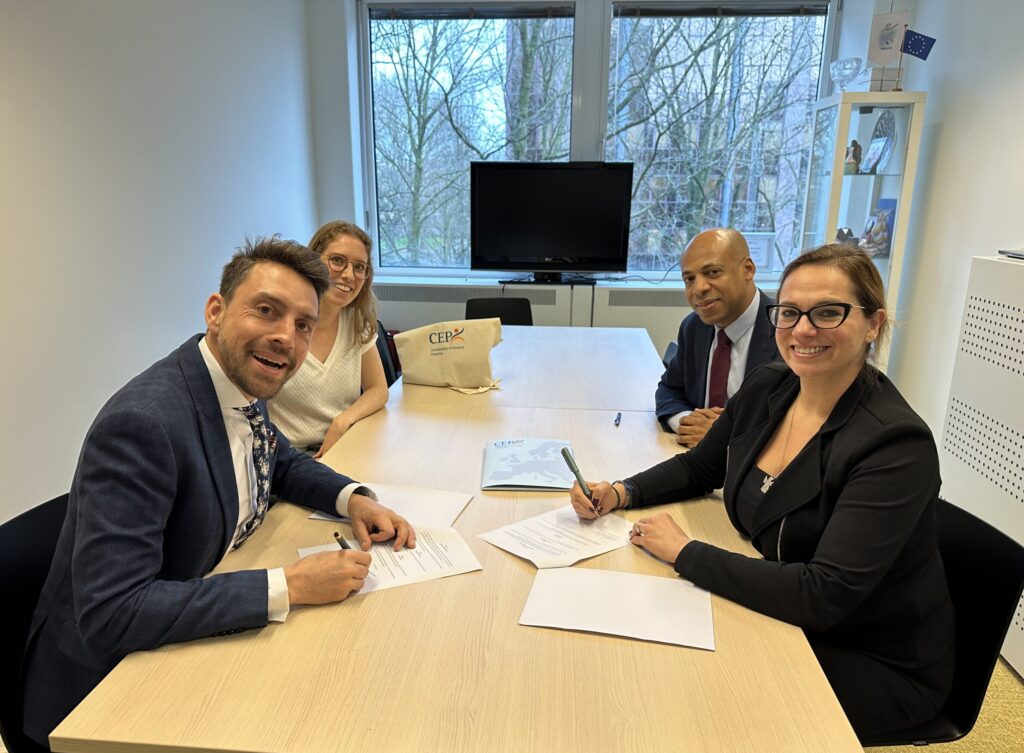Previous Article
News
Recap: STARR final conference
Delegates from 22 countries, 28 presentations and a conference that started at the ground floor and ended at the top of the 19-stories building. These are just a few data from the final event of the European funded project Strengthening Transnational Approaches to Reducing Re-offending (STARR), held from 8th – 10th June in Sofia, Bulgaria. “It was a very rich conference”, summarizes Steve Pitts (photo), leader of strategy for the STARR Project. “Bringing together the learning of the project in Sofia did more than produce answers to the key questions which were asked at the beginning of the project: we also achieved some other unexpected, yet highly valuable outcomes.”

STARR started in late 2008 with the aim of improving the understanding of ‘What Works’ in Reducing Re-offending in the EU, across a range of offence types. There had previously been no EU-wide understanding of what interventions are most effective in working with offenders or those at risk. Subsequently a prime aim of this project was to offer an EU-wide perspective to inform and develop models of promising practice. The project has focused on three priority areas: Young Offenders age 16-25 (including issues of Race & Faith Hate Crime, Serious Group Offending and Radicalisation); Domestic Violence; and Drugs & Alcohol.
“We have now a much clearer picture of evidenced good practice across Europe thanks to the work by Cambridge University, project partners and many other contributors”, says Steve Pitts. “On the basis of project research and presentations two main conclusions could be drawn. One is that much money is spent on work with offenders across Europe, but remarkably little money is spent on the evaluation of this work. As such it is very difficult to know whether money has been spent wisely. At the conference it became clear that there is a wide acceptance throughout European countries of the desirability of more evaluation and the readiness to cooperate to achieve a more consistent and coordinated approach. Such an approach would make it easier to learn from each other about how to evaluate, and to share the results of evaluations. We may therefore expect to see an accelerated increase of learning about what is effective and, by implication, what work with offenders represents good investment.”
The other conclusion can be drawn from the many best practices that were presented at the conference. “We have heard some very inventive approaches to tackling domestic violence that involve a range of methods and organizations working together effectively across communities”, illustrates Steve Pitts. “We also heard some state of the art developments in addressing gang or serious group offending. And in the field of drugs misuse we were all very impressed by the Italian example of supporting drug users via imaginative interventions in the community. If there is a common thread it is the value of linking good quality work with individual offenders to work in and with the communities from which they come. Perhaps surprisingly, very often these best practices are not even known about in the country where they are practiced. Therefore I think we have found a much greater need for communications, nationally and internationally, than we had first imagined. In this work, CEP has a central role to play.”
Another remarkable outcome of the conference stems from the debate between several academic speakers . “Traditionally the Risk/Needs/Responsivity school and the school of Desistance are often considered to be very different – perhaps even opposed – paradigms towards reducing reoffending, ” Steve Pitts explains. “At the conference however, presentations from Prof. Friedrich Lösel from the Criminological Institute of the University of Cambridge and Prof. Fergus McNeill of the Scottish Centre for Crime and Justice Research stimulated debate on sentence purpose and whether a comprehensive view of “what works” embraces both approaches. The opportunities to look where there is compatibility between them and develop approaches which are a synthesis of the best, and to share learning between prisons and probation, have now been crystallized in part as a result of the conference. I think it will be a challenge to continue this discussion; who knows, we may be able to take this further in a follow-up project to STARR.”
The outcomes and the conclusion of the conference will be published in a conference report.

Related News
Keep up to date with the latest developments, stories, and updates on probation from across Europe and beyond. Find relevant news and insights shaping the field today.
New

Uncategorized
Newsletter December 2025 out now, featuring the 2026 CEP Activity calendar
18/12/2025
CEP’s latest newsletter is out now! Articles on the CoPPer Final Project Conference, New CEP report: The European Survey of Probation Staff’s Stress and Morale, and more.>> Read here
Reading corner

Criminal Justice
Bridging Research and Practice in Forensic Social Work: An interview with the editors of Forensic Social Work – Supporting Desistance
17/12/2025
Supporting desistance while managing risk is at the heart of criminal justice social work across Europe. In Forensic Social Work – Supporting Desistance, editors Jacqueline Bosker, Anneke Menger and Vivienne de Vogel bring together scientific insights and everyday professional practice to support those working with justice-involved individuals. In this interview, they reflect on the motivation behind the English edition of the book, its core themes, and how professionals can use its tools and approaches in their daily work.
New

Mental Health
Why some court-ordered psychiatric patients remain in prison in Europe
15/12/2025
There is an urgent yet insufficiently recognised human-rights and public-health crisis unfolding across Europe: the systematic imprisonment of mentally ill individuals who have already been assessed by courts or psychiatric professionals as requiring treatment in secure psychiatric hospitals rather than confinement in correctional facilities. Evidence indicates that structural failings—including bed shortages, procedural delays, and fragmented legal and administrative frameworks—have produced a situation in which thousands of vulnerable individuals remain in prison in direct contravention of judicial orders, clinical assessments, and international human-rights obligations. This constitutes a largely invisible mental-health scandal, obscured by inconsistent data collection, political sensitivities, and the general invisibility of people in custody.
New

Partners
Memorandum of Understanding Signed Between CEP and RESCALED
11/12/2025
On 10 December 2025, at the CEP Headquarters in Utrecht, CEP and RESCALED signed a Memorandum of Understanding (MoU) aimed at strengthening cooperation in areas of mutual interest. The MoU was signed by Rogier Elshout, Chair of Rescaled and Jana Špero Kamenjarin, CEP Secretary General, with the signing ceremony attended by Helen De Vos, Rescaled Executive Director and Daniel Danglades, CEP Vice-President.
Through this partnership, both organizations will work together to develop joint activities, exchange expertise, and support initiatives that advance their shared objectives.
This MoU reflects a commitment to transparent communication and the creation of new opportunities for joint projects and broader community impact.
New

Human rights and ethics
10 December – Human Rights Day
10/12/2025
CEP champions human rights because protecting dignity, fairness and equality is at the heart of effective probation. On 10 December, Human Rights Day, CEP celebrates the principle that everyone deserves respect and justice. Across Europe, CEP promotes social inclusion and supports the reintegration of people in contact with the criminal justice system. CEP strengthens community-based alternatives to imprisonment that reduce reoffending and build safer societies, advances professional and ethical probation practice, and connects practitioners, policymakers and researchers to share knowledge and promote humane justice. For CEP, justice is not only about punishment but also about opportunity, rehabilitation and respect for all.
Recap

CEP Events
Recap: First face-to-face meeting of the Expert Group Chairs
10/12/2025
On 9 December 2025, the CEP Office in Utrecht hosted the first face-to-face meeting of the Expert Group Chairs. The purpose of this meeting was to reintroduce the work of the Expert Groups and explore connections between work plans, opportunities for cooperation, and areas of common interest.
Subscribe to our bi-monthly email newsletter!
"*" indicates required fields
- Keep up to date with important probation developments and insights.

